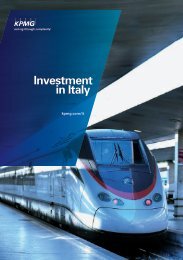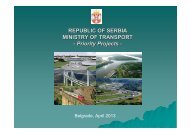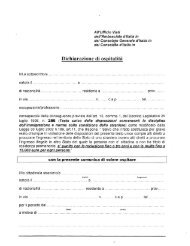Innovation Canada: A Call to Action
Innovation Canada: A Call to Action
Innovation Canada: A Call to Action
You also want an ePaper? Increase the reach of your titles
YUMPU automatically turns print PDFs into web optimized ePapers that Google loves.
Program Mix and DesignFigure 6.3 Tax Expenditures, by Type of CorporationValue of Credit ($ million)Number of Corporations (units)2004 2005 2006 2007 2004 2005 2006 2007SmallCCPCs 1 043 1 119 1 128 1 298 15 482 16 917 17 712 19 806Largefirms 1 944 1 448 1 471 1 822 2 452 2 448 2 728 2 599Others a 137 170 208 136 1 259 1 510 1 920 1 310Total 3 123 2 737 2 807 3 256 19 193 20 875 22 360 23 724aIncludes CCPCs in expenditure limit phase-out range and small non-CCPCs.Source: Department of Finance.face “tax risk” in that they must have sufficienttax payable in order <strong>to</strong> fully benefit from thecredit. This has the significant advantage of“targeting success” — that is, the (nonrefundable)benefit is available only <strong>to</strong>companies that are sufficiently profitable —while making the credit less open ended than itinitially appears. Although businesses can carryunused credits <strong>to</strong> future years, delayed usereduces the value of the benefit. With thealmost 50-percent reduction in the federalstatu<strong>to</strong>ry corporate tax rate since 2000,businesses now find it more difficult <strong>to</strong> fullyutilize the SR&ED tax credit generated in acurrent year against federal tax otherwisepayable, putting further downward pressure onthe average expected effective tax credit rate. Incontrast, the criterion for “targeting success”does not apply <strong>to</strong> the small CCPCs that receivea fully refundable tax credit.Net Public BenefitIn 2007, the Department of Finance conducteda thorough benefit–cost analysis of the SR&EDprogram (Parsons and Phillips 2007). Itconcluded that the public benefit of theprogram — the part due <strong>to</strong> the incrementalR&D investment stimulated by the SR&EDsubsidy and the estimated social return on thatincremental investment (i.e., extra outputgenerated in the economy as a whole) —exceeded its full costs. These costs include no<strong>to</strong>nly administrative and compliance costs, butalso the cost <strong>to</strong> the economy of having <strong>to</strong> raiseadditional tax revenues <strong>to</strong> finance the credit.This type of benefit–cost analysis relies on keyparameter estimates — particularly of theextra R&D performed per dollar of tax creditprovided and of the social rate of return onbusiness R&D expenditure — which are subject<strong>to</strong> considerable estimation error. Thesemeasurement problems, <strong>to</strong>gether with thedifficulty of applying the methodology <strong>to</strong> otherinnovation support programs — for example, <strong>to</strong>business network and internship programs —have led the Panel <strong>to</strong> conclude that thecalculation of net public benefit is notsufficiently precise at this time <strong>to</strong> permit abenefit–cost ranking of the government’sbusiness R&D support programs, nor <strong>to</strong> finetunethe mix between SR&ED and the portfolioof direct expenditures.The estimation of net public benefit ofinnovation programs is nevertheless an excellentgoal and should be included, as it is developedand refined, within the suite of programevaluation <strong>to</strong>ols, as referred <strong>to</strong> in Chapter 5 onprogram effectiveness. What can be said, in anyevent, is that the net public benefit of a supportprogram declines as administration andcompliance costs increase, and as the subsidy6-7
















